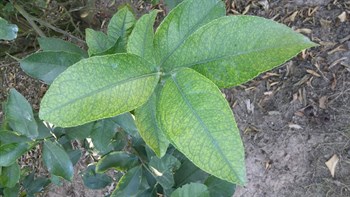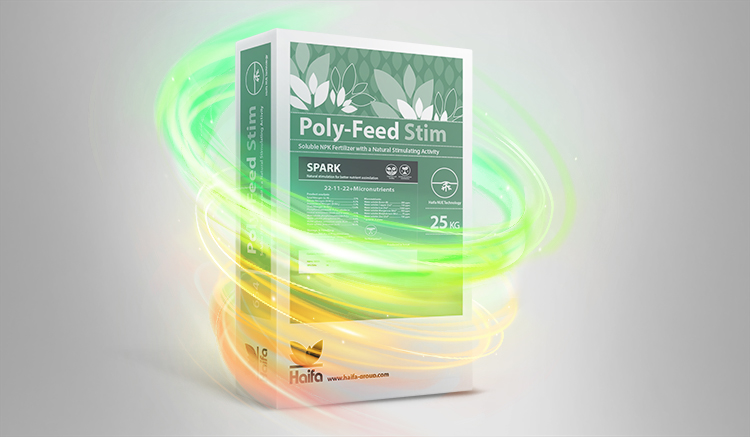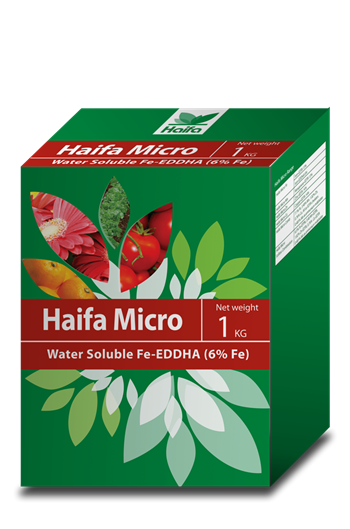Although Iron is the 4th most common element in the Earth, yet its deficiency in crops is very common. Iron deficiency can have a significant economic impact, depending on the timing of the deficiency during the crop production cycle.
Iron plays an important role in many plant functions, including chlorophyll development and function, energy transfer, nitrogen fixation, plant respiration and plant metabolism. Iron deficiency is more likely to happen in alkaline soils (pH>7.5, especially where calcium carbonate is abundant). Iron is immobile in plants and therefore deficiency symptoms appear first on the youngest leaves. The most notable symptom of iron deficiency is chlorosis or yellowing between the veins of the youngest leaves.
(pH>7.5, especially where calcium carbonate is abundant). Iron is immobile in plants and therefore deficiency symptoms appear first on the youngest leaves. The most notable symptom of iron deficiency is chlorosis or yellowing between the veins of the youngest leaves.
The best practice to avoid iron deficiency is to add iron to the fertilization program using special NPK fertilizers (such as Poly-Feed™ Foliar / Poly-Feed™ Stim) that contain micronutrients, or special micro-element fertilizers (such as Haifa-Micro™). In these fertilizers the iron is complexed with soluble chelate which keeps it in a state available to the plant for absorption.
Chelate is a complex of a micronutrient ion and an organic molecule that "holds" it, called ligand. As long as the ion is attached to the ligand, it is protected from interacting with other ions in the solution, which might turn it unavailable for plant uptake.
During the crop's growth cycle, Iron deficiency may occur if iron was not sufficiently applied in the fertilization program or because of soil conditions (like waterlogged soil) or due to high levels of certain minerals in the soil that create an antagonism with iron (nitrogen, zinc, manganese, and molybdenum). In this situation corrective treatment is needed and foliar treatment with chelated Iron can provide a rapid response.
Foliar uptake of nutrients is much faster than root uptake. Therefore, foliar feeding is the method of choice when deficiency symptoms are noted, and prompt correction of deficiencies is required. Nutrients rapidly absorbed through the foliage, providing the plant with the missing nutrients, and strengthening it.
When spraying a nutrient solution, the following rules should be followed:
1. Spray during the cooler and more humid times of the day and when wind is low.
2. Never spray plants under stress.
If you have not sprayed your crop with a nutrient solution before, the nutrient solution should be tested on few plants a week before spraying it on the all field to check side effects.
For more information on Iron deficiency click here.






